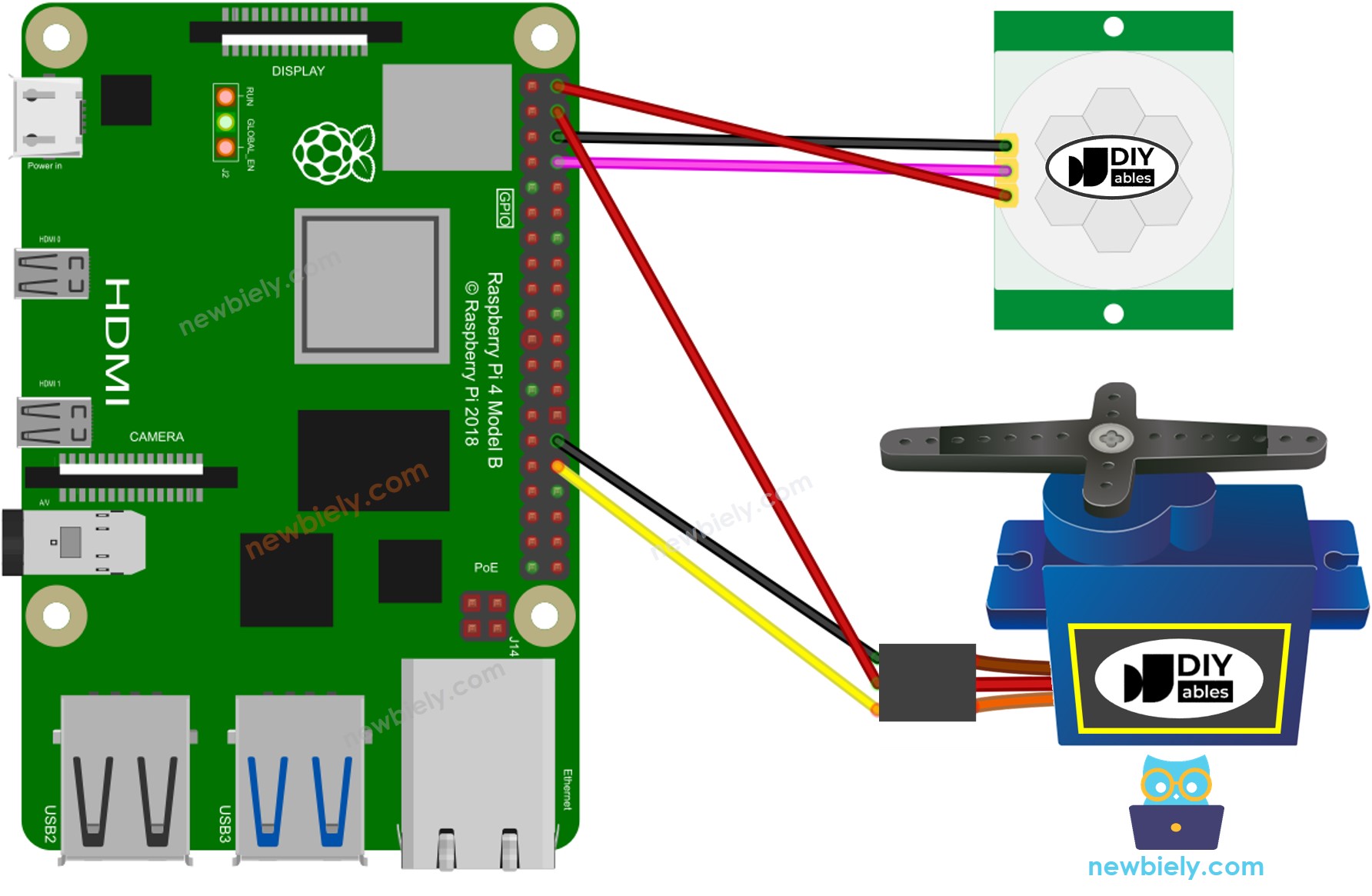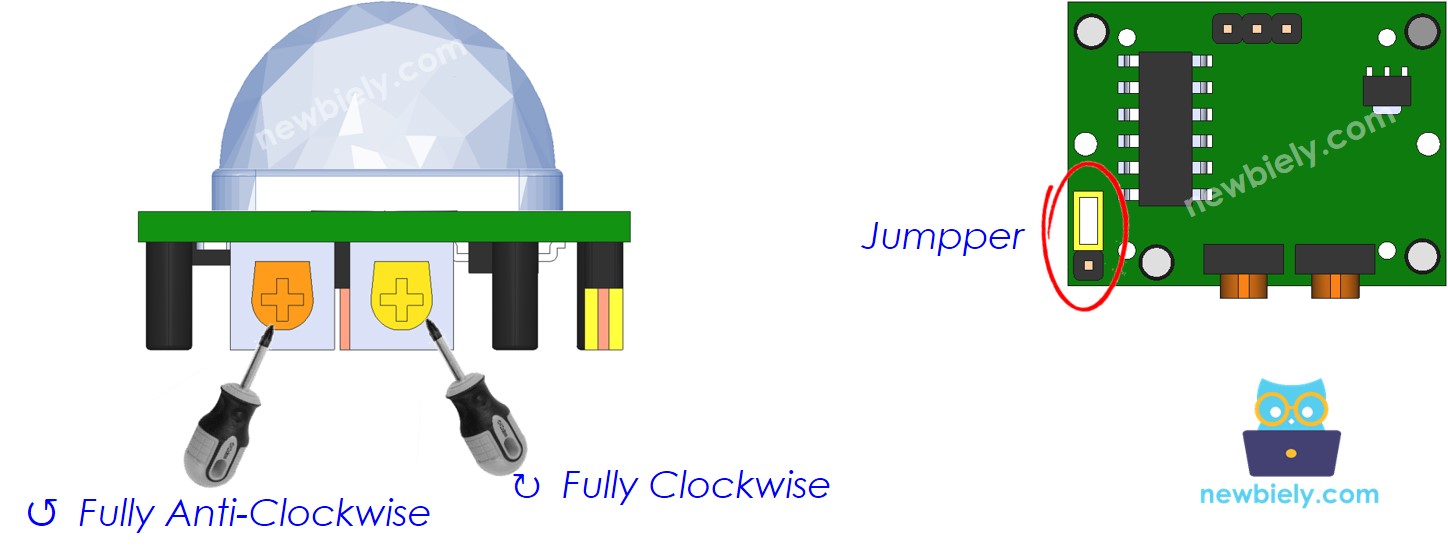Raspberry Pi - Motion Sensor - Servo Motor
This tutorial instructs you how to use Raspberry Pi and motion sensor to control servo motor. In detail:
- If a motion is detected, Raspberry Pi rotates the servo motor to 90 degrees
- If no motion is detected, Raspberry Pi rotates the servo motor back to 0 degrees.
This can be applied in an automation process that triggers actions upon detecting human presence.
Hardware Preparation
Or you can buy the following kits:
| 1 | × | DIYables Sensor Kit (30 sensors/displays) | |
| 1 | × | DIYables Sensor Kit (18 sensors/displays) |
Additionally, some of these links are for products from our own brand, DIYables .
Overview of Servo Motor and Motion Sensor
If you are unfamiliar with servo motors and motion sensors (including pinouts, how they work, and how to program them), the following tutorials can help:
Wiring Diagram

This image is created using Fritzing. Click to enlarge image
To simplify and organize your wiring setup, we recommend using a Screw Terminal Block Shield for Raspberry Pi. This shield ensures more secure and manageable connections, as shown below:

Please note that the wiring diagram shown above is only suitable for a servo motor with low torque. In case the motor vibrates instead of rotating, an external power source must be utilized to provide more power for the servo motor. The below demonstrates the wiring diagram with an external power source for servo motor.
TO BE ADD IMAGE
Please do not forget to connect GND of the external power to GND of Arduino Raspberry Pi.
Initial Setting
| Time Delay Adjuster | Screw it in anti-clockwise direction fully. |
| Detection Range Adjuster | Screw it in clockwise direction fully. |
| Repeat Trigger Selector | Put jumper as shown on the image. |

Raspberry Pi Code - Motion Sensor Controls Servo Motor
Detailed Instructions
- Make sure you have Raspbian or any other Raspberry Pi compatible operating system installed on your Pi.
- Make sure your Raspberry Pi is connected to the same local network as your PC.
- Make sure your Raspberry Pi is connected to the internet if you need to install some libraries.
- If this is the first time you use Raspberry Pi, See how to set up the Raspberry Pi
- Connect your PC to the Raspberry Pi via SSH using the built-in SSH client on Linux and macOS or PuTTY on Windows. See to how connect your PC to Raspberry Pi via SSH.
- Make sure you have the RPi.GPIO library installed. If not, install it using the following command:
- Create a Python script file motion_sensor_servo.py and add the following code:
- Save the file and run the Python script by executing the following command in the terminal:
- Wave your hand in front of the sensor.
- Check out the change in the angle of the servo motor.
The script runs in an infinite loop continuously until you press Ctrl + C in the terminal.
